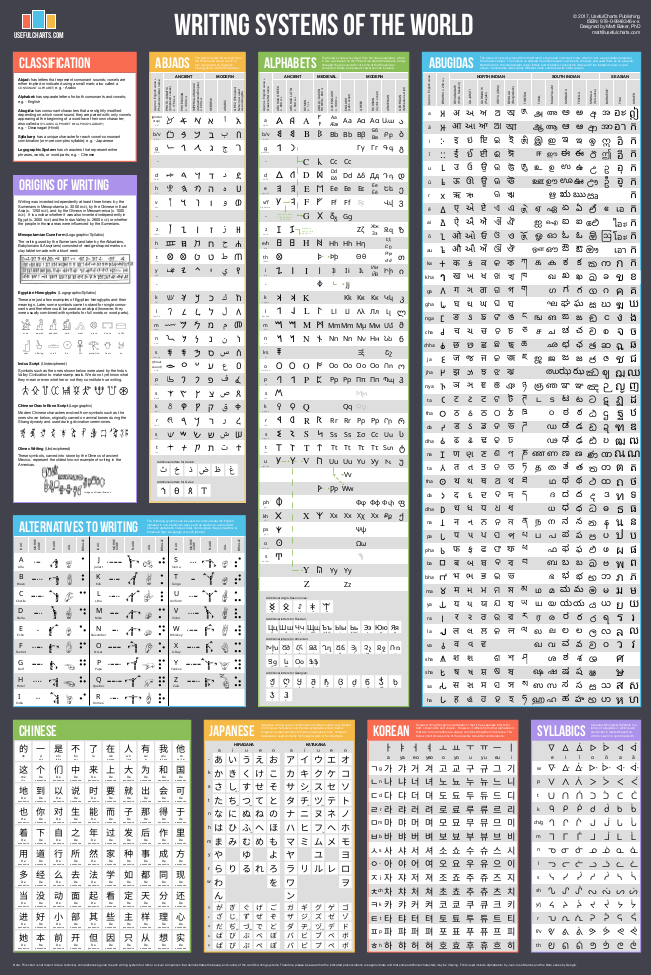Today we have a guest post by Matt Baker
I remember the day when, as a child, I first discovered a writing system other than English. I was flipping through an encylopedia (this was the 1980’s, pre-Google) and noticed that, at the beginning of the “A” section, there was a little chart that showed the English letter equivalent in both Hebrew and Greek. I was fascinated by this and immediately tried to make my own chart showing all 26 letters in the other two languages. Like many English speakers who have never learned another language, I assumed that all foreign writing systems would have 26 letters that perfectly corresponded to the English ones. Obviously, this was not the case and I quickly discovered this when I tried to make my chart. Frustrated and confused, I gave up.
Well, it has been over 30 years since that day, and now that I have a little more education and life experience under my belt, I decided to complete the task. But this time, I included 45 different writing systems (or alternatives). Of course, the correlations do not match perfectly and I’ve had to divide the systems into different types (abjads, alphabets, abugidas, etc.) but the result is pretty cool. My goal in making this chart was not to provide a technical, comprehensive guide to each individual writing system but rather to demonstrate the beauty and variety of the world’s writing systems (hence, please note that the indicated pronunciations are approximate and that in some cases, certain additional characters may be missing).
The chart is finished (except for some final checks from those who know each system) and I’m currently raising funds on Kickstarter to get it printed. If you’re interested, please take a look at the project page. There you’ll find a full list of the writing systems included.

Looks fantastic! I’ve submitted my pledge, and hope the project is successful!
A few notes, if Matt Baker is reading these:
1. I noticed that the Khmer vowels mistakenly have the first “consonant” [ka] repeated. I don’t know if this is an old version of your table, but that’s obviously an error.
2. I see the South Indian and SE Asian scripts don’t have the short [e] and [o] vowels included, presumably because these vowels didn’t have separate symbols in the Brahmi abugida. However, since all the South Indian and SE Asian scripts have developed symbols for those sounds, I imagine they should be included, even if they will have blank counterparts in the Gujarati, Gurmukhi, Oriya, and Bengali columns. (Devanagari has also developed symbols for these to render Konkani and other languages where the contrast is needed.)
3. The Bengali script does have a symbol for va/wa (ৱ), although it’s not used as such in Bengali itself. It is used in Assamese as [wɔ]. (In some renditions of the Bengali alphabet, ব is repeated in the slot for va/wa, as the sounds [bɔ] and [wɔ] as well as their written representations merged historically in the evolution of Bengali.)
4. The South Indian and SE Asian scripts have other symbols that were developed to cover sounds specific to the languages they represented. Many of those symbols clearly developed as variations on existing symbols, sort of like how , , and came out of the same Latin symbol. Why are these South Indian and SE Asian variations not included, the way that such variations from the Latin alphabet are included here? (Is it just space considerations? I could understand that.)